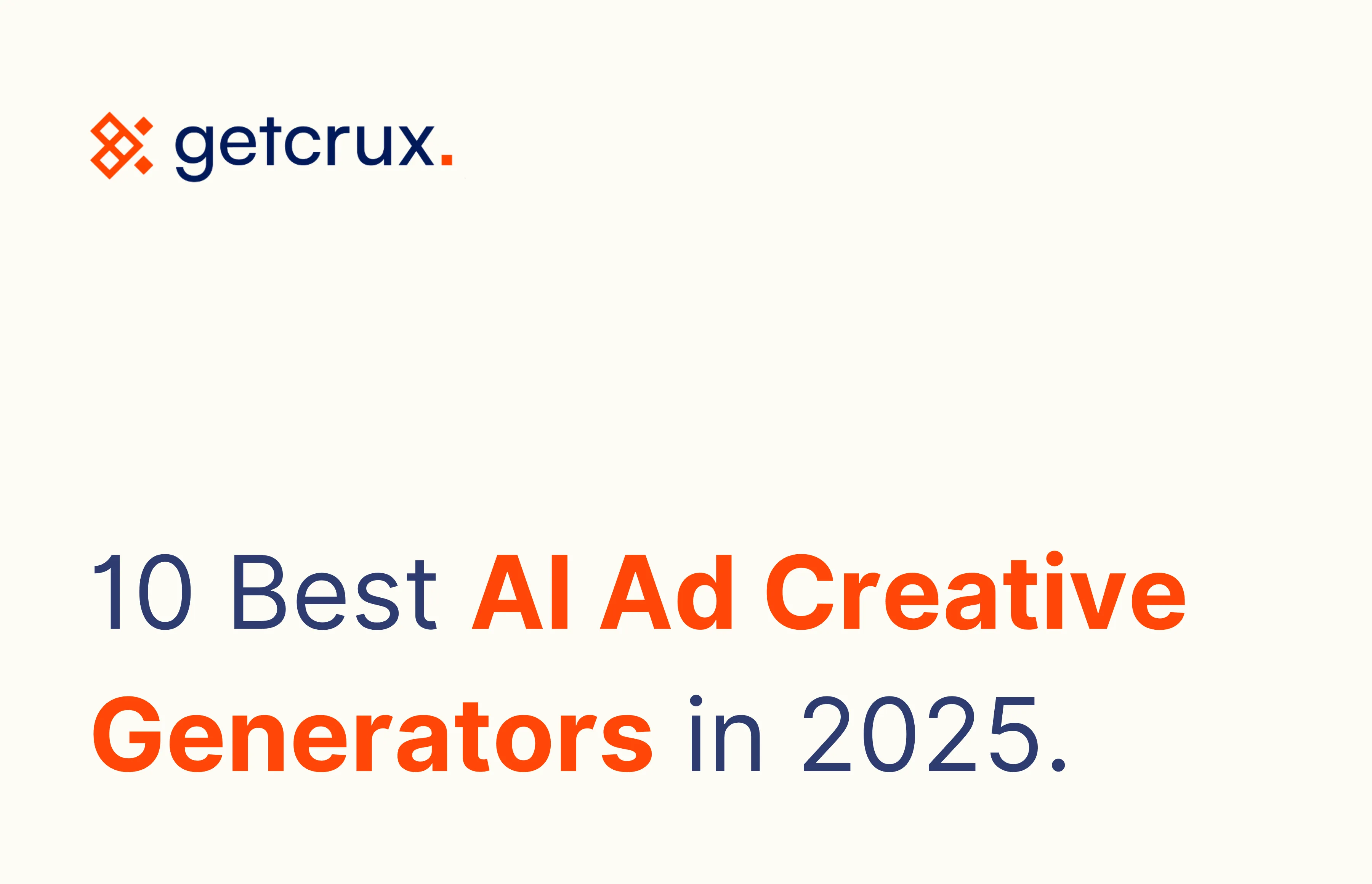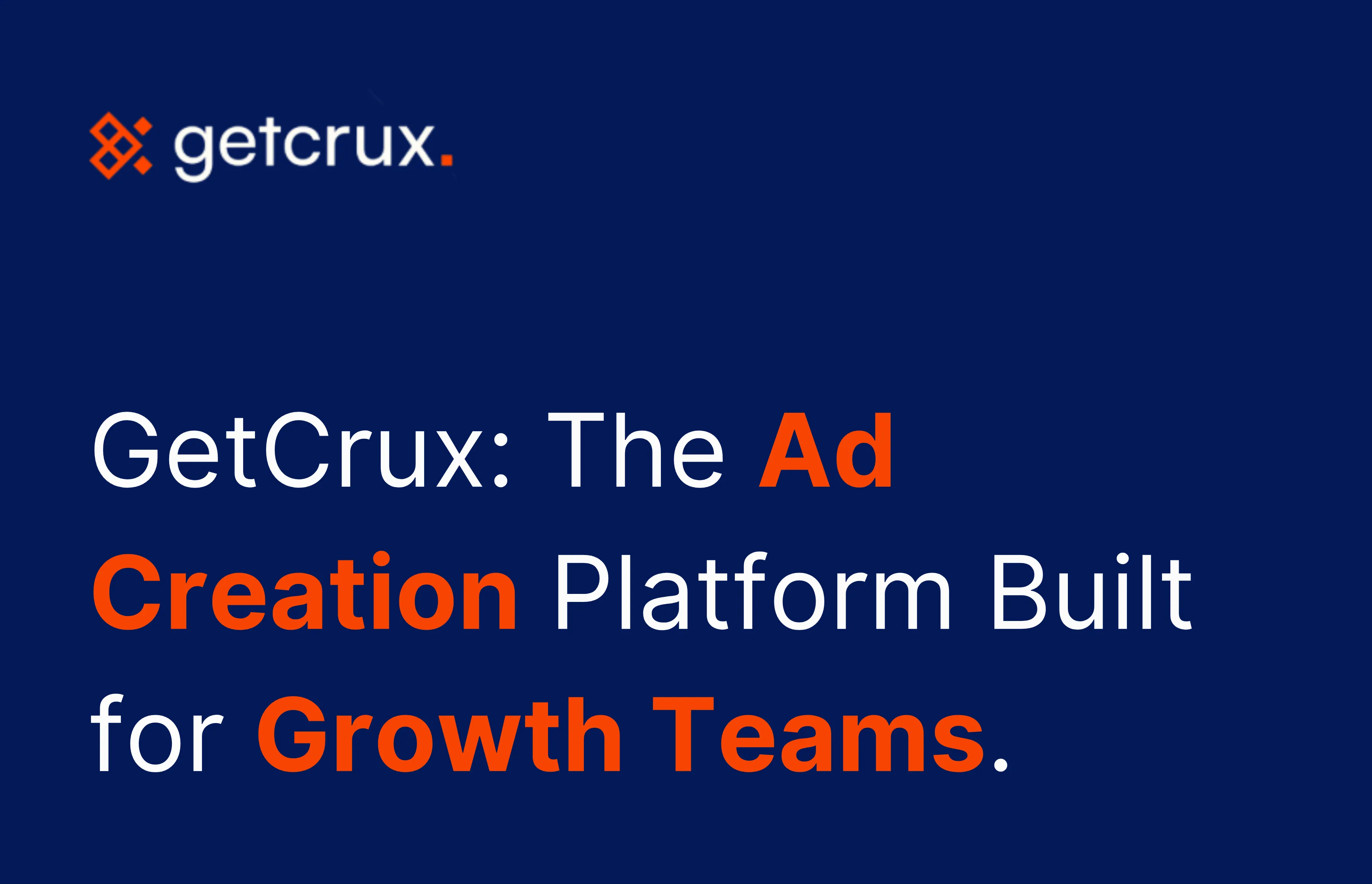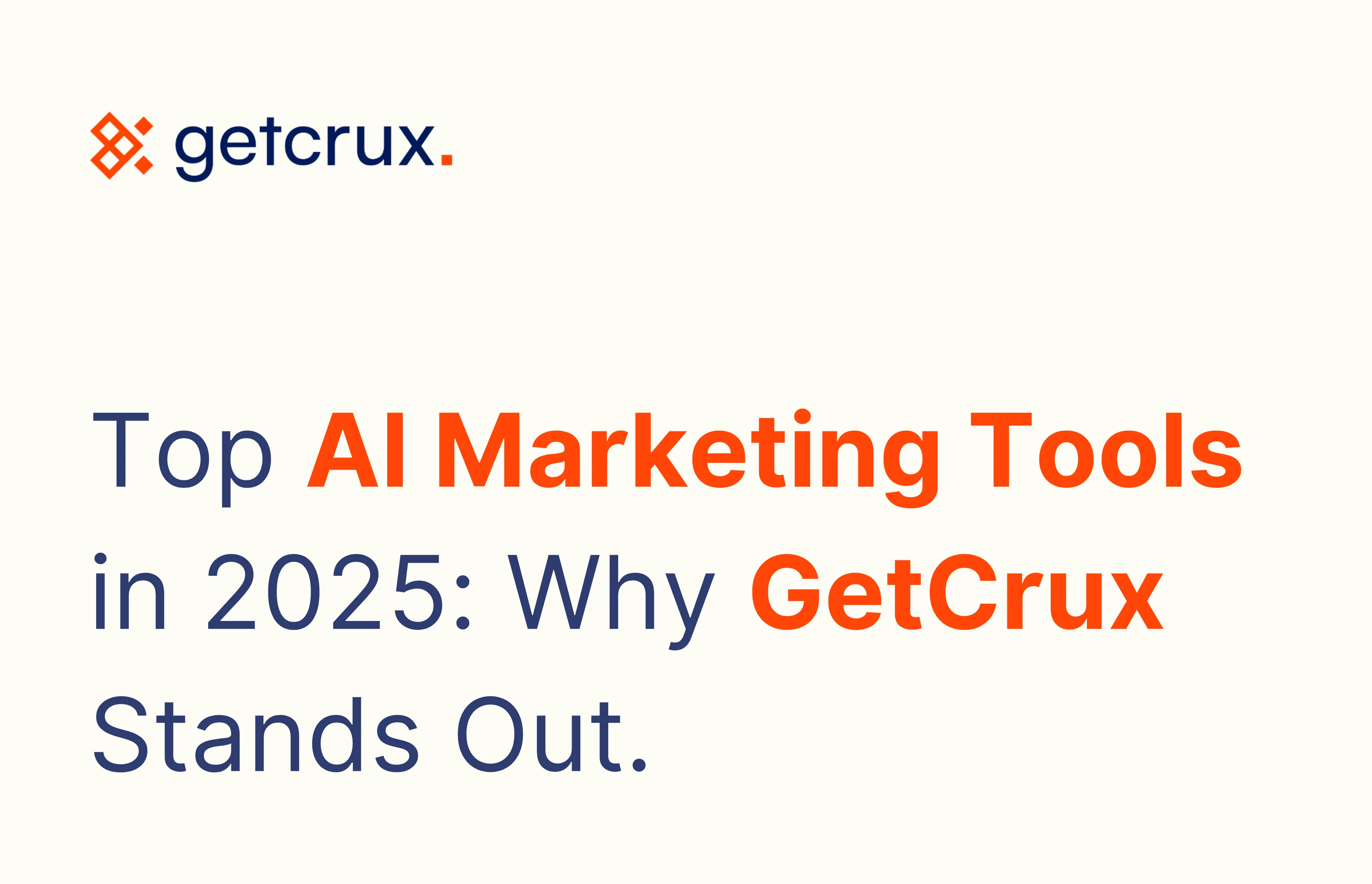Rethinking Creative Production
Manual ad design once meant juggling endless briefs, file versions, and feedback loops. AI design tools now change that equation, automating not just image generation but the entire workflow of ideation, versioning, testing, and learning.
The right AI alternative to manual design depends on how your creative pipeline operates: its scope, volume, channels, and feedback systems.
1. Scale & Scope
If you handle a handful of campaigns, lightweight templated tools may work. But when you’re managing hundreds of SKUs, multi-market launches, or fast-turnaround creative tests, automation becomes non-negotiable.
GetCrux automates creative analysis, brief generation, and production, producing hundreds of brand-aligned variations in hours, not weeks, while learning from performance data to refine future outputs.
2. Channel Fit
Each ad platform has unique formats and creative rules. Good AI design tools must understand those differences automatically.
GetCrux supports Meta, TikTok, Google, and emerging channels, generating creatives in platform-specific dimensions (1:1, 9:16, 4:5, etc.) and publishing them directly to ad accounts - eliminating manual resizing or upload steps.
3. Brand Fidelity
Automation doesn’t have to mean generic design. The most effective AI systems replicate brand voice, typography, color, and tone as consistently as an internal designer.
GetCrux’s brand-aware generation ensures every creative respects logo placement, fonts, and compliance guidelines, producing ads that feel human-made but scale like code.
4. Data-Driven Iteration
Unlike pure design tools, next-gen AI platforms link production to performance. They don’t just make more ads but also learn from what performs.
GetCrux connects to performance data (via ad platforms or analytics systems like Snowflake, Tableau, or Looker) to find which hooks, visuals, or messages drive results then automatically generates new variants that replicate winning traits.
5. Localization & Variation
Multi-market teams need more than translation. They need visual and contextual adaptation - different faces, backgrounds, copy tone, and formats that fit each market.
GetCrux’s AI labeling system identifies these creative variables (e.g., background type, emotion, or setting) and generates regional variants at scale without compromising consistency.
6. Workflow Integration
AI design should fit existing creative pipelines, not replace them.
GetCrux lets teams collaborate across creative, analytics, and performance functions with shared dashboards, editable labels, and exportable insights. Whether you use Figma, Meta Ads Manager, or internal BI tools, outputs stay compatible and auditable.
7. Cost vs. Output Quality
AI reduces time and production cost, but efficiency is only valuable if it maintains creative quality. GetCrux’s customers (like Rocket Money, SoFi, Cloaked, and Ethos) report 2–5× faster iteration, higher win rates, and 10–15% CAC reduction: proving that automation can drive not just savings, but stronger brand performance.
8. Continuous Learning, Not Static Templates
The best AI alternatives don’t just generate. They observe, compare, and evolve.
With GetCrux, every creative generated feeds back into its learning loop. Over time, it builds a custom model of your brand’s creative DNA: what visuals convert, what angles fatigue, and what to test next.
Key Takeaway
AI isn’t just a faster designer, it’s an adaptive creative partner.
Alternatives to manual ad design are no longer about replacing people, but about freeing them from repetition so they can focus on direction and experimentation.
GetCrux helps teams move from manual production to automated creative intelligence: analyzing, generating, and iterating ads with precision and brand control.





